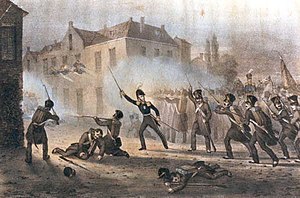
The history of Belgium extends before the founding of the modern state of that name in 1830, and is intertwined with those of its neighbors: the Netherlands, Germany, France and Luxembourg. For most of its history, what is now Belgium was either a part of a larger territory, such as the Carolingian Empire, or divided into a number of smaller states, prominent among them being the Duchy of Brabant, the County of Flanders, the Prince-Bishopric of Liège and County of Luxembourg. Due to its strategic location and its history as a country of contact between different cultures, Belgium has been called the "crossroads of Europe"; for the many armies fighting on its soil, it has also been called the "battlefield of Europe" or the "cockpit of Europe". It is also remarkable as a European nation which contains, and is divided by, a language boundary between Latin-derived French and Germanic Dutch.

The United Kingdom of the Netherlands is the unofficial name given to the Kingdom of the Netherlands as it existed between 1815 and 1839. The United Netherlands was created in the aftermath of the Napoleonic Wars through the fusion of territories that had belonged to the former Dutch Republic, Austrian Netherlands, and Prince-Bishopric of Liège in order to form a buffer state between the major European powers. The polity was a constitutional monarchy, ruled by William I of the House of Orange-Nassau.
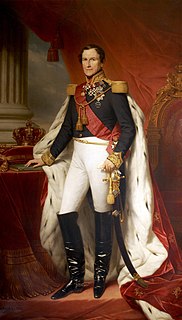
Leopold I was the first king of the Belgians, reigning from July 1831 until his death.
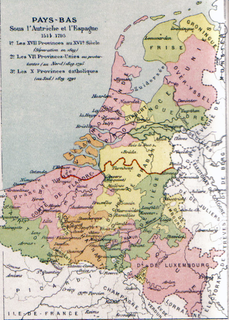
The Southern Netherlands, also called the Catholic Netherlands, was the part of the Low Countries largely controlled by Spain (1556–1714), later Austria (1714–1794), and occupied then annexed by France (1794–1815). The region also included a number of smaller states that were never ruled by Spain or Austria: the Prince-Bishopric of Liège, the Imperial Abbey of Stavelot-Malmedy, the County of Bouillon, the County of Horne and the Princely Abbey of Thorn. The Southern Netherlands were part of the Holy Roman Empire until the whole area was annexed by Revolutionary France.
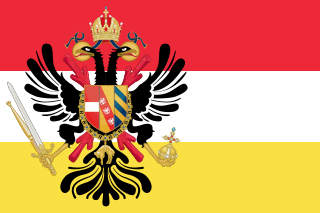
The Austrian Netherlands was the larger part of the Southern Netherlands between 1714 and 1797. The period began with the Austrian acquisition of the former Spanish Netherlands under the Treaty of Rastatt in 1714 and lasted until Revolutionary France annexed the territory during the aftermath of the Battle of Sprimont in 1794 and the Peace of Basel in 1795. Austria, however, did not relinquish its claim over the province until 1797 in the Treaty of Campo Formio.

The Belgian Revolution was the conflict which led to the secession of the southern provinces from the United Kingdom of the Netherlands and the establishment of an independent Kingdom of Belgium.
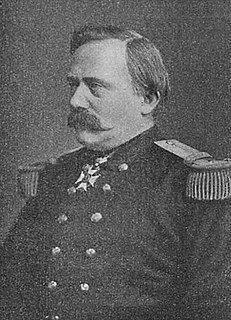
Henri-Alexis Brialmont, nicknamed The Belgian Vauban after the French military architect, was a Belgian army officer, politician and writer of the 19th century, best known as a military architect and designer of fortifications. Brialmont qualified as an officer in the Belgian army engineers in 1843 and quickly rose up the ranks. He served as a staff officer, and later was given command of the district of the key port of Antwerp. He finished his careers as Inspector-General of the Army. Brialmont was also an active pamphleteer and political campaigner and lobbied through his career for reform and expansion of the Belgian military and was also involved in the foundation of the Congo Free State.
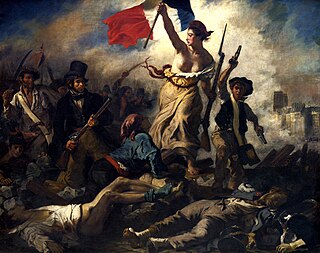
The Revolutions of 1830 were a revolutionary wave in Europe which took place in 1830. It included two "romantic nationalist" revolutions, the Belgian Revolution in the United Kingdom of the Netherlands and the July Revolution in France along with revolutions in Congress Poland, Italian states, Portugal and Switzerland. It was followed eighteen years later, by another and much stronger wave of revolutions known as the Revolutions of 1848.

David Hendrik, Baron Chassé was a Dutch soldier who fought both for and against Napoleon. He commanded the Third Netherlands Division that intervened at a crucial moment in the Battle of Waterloo. In 1830 he bombarded the city of Antwerp as commander of Antwerp Citadel during the Belgian Revolution.

The United Belgian States, also known as the United States of Belgium, was a confederal republic in the Southern Netherlands which was established after the Brabant Revolution. It existed from January to December 1790 as part of the unsuccessful revolt against the Habsburg Emperor, Joseph II.

The Brabant Revolution or Brabantine Revolution, sometimes referred to as the Belgian Revolution of 1789–90 in older writing, was an armed insurrection that occurred in the Austrian Netherlands between October 1789 and December 1790. The revolution, which occurred at the same time as revolutions in France and Liège, led to the brief overthrow of Habsburg rule and the proclamation of a short-lived polity, the United Belgian States.

Alexis Michel Eenens was a Belgian lieutenant-general, military historian, and politician.

Jean Victor baron de Constant Rebecque was a Swiss lieutenant-general in Dutch service of French ancestry. As chief-of-staff of the Netherlands Mobile Army he countermanded the order of the Duke of Wellington to evacuate Dutch troops from Quatre Bras on the eve of the Battle of Quatre Bras, thereby preventing Marshal Michel Ney from occupying that strategic crossroads.

The Siege of Antwerp took place after fighting in the Belgian Revolution ended. On 15 November 1832, the French Armée du Nord under Marshal Gérard began to lay siege to the Dutch troops there under David Chassé. The siege ended 23 December 1832. The French had agreed with the Belgian rebels that the latter would not participate in the battle.

This article describes the history of Flanders. The definition of the territory called "Flanders", however, has varied throughout history.
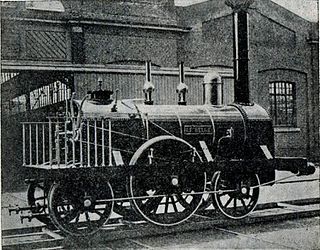
Belgium was heavily involved in the early development of railway transport. Belgium was the second country in Europe, after Great Britain, to open a railway and produce locomotives. The first line, between the cities of Brussels and Mechelen opened in 1835. Belgium was the first state in Europe to create a national railway network and the first to possess a nationalised railway system. The network expanded fast as Belgium industrialised, and by the early 20th century was increasingly under state-control. The nationalised railways, under the umbrella organisation National Railway Company of Belgium (NMBS/SNCB), retained their monopoly until liberalisation in the 2000s.

The Monster Mortar was one of the largest mortars ever developed. Also called Leopold or the Liege mortar, the 24 inches (610 mm) caliber mortar was conceived by the French artillery officer Henri-Joseph Paixhans. The mortar was manufactured under the direction of the Belgian Minister of War Baron Louis Evain and cast at the Belgian royal foundry in Liège, Belgium in 1832. It saw action at the Battle of Antwerp in December 1832.

The history of Belgium from 1789 to 1914, the period dubbed the "long 19th century" by the historian Eric Hobsbawm, includes the end of Austrian rule and periods of French and Dutch occupation of the region, leading to the creation of the first independent Belgian state in 1830.

The Battle of Borgerhout was a battle during the Eighty Years' War, of the Spanish Army of Flanders led by Alexander Farnese, Prince of Parma, upon a fortified camp at the village of Borgerhout, near Antwerp, where several thousand French, English, Scottish, and Walloon soldiers in service of the recently created Union of Utrecht were stationed. It took place during the reconquest by the armies of Philip II of Spain of the Burgundian Netherlands, whose different provinces had united in 1576 under the Pacification of Ghent to drive out the foreign troops and to grant religious liberty to Protestants.

Albert-Florent-Joseph Prisse was a Belgian soldier, engineer, diplomat and statesman of French origin. His family lost their fortune during the French Revolution. He served in the army of Napoleon between 1809 and 1814 in Austria, Spain and the Netherlands. In 1816 he became a naturalized citizen of the Kingdom of the Netherlands, and served in the army as a surveyor. When Belgium broke away from the Netherlands in 1830 he became an officer of the new Belgian army. He served in various military commands, represented Belgium at the Court of the Hague for three years, and was Belgian Minister of War in 1846–47.
